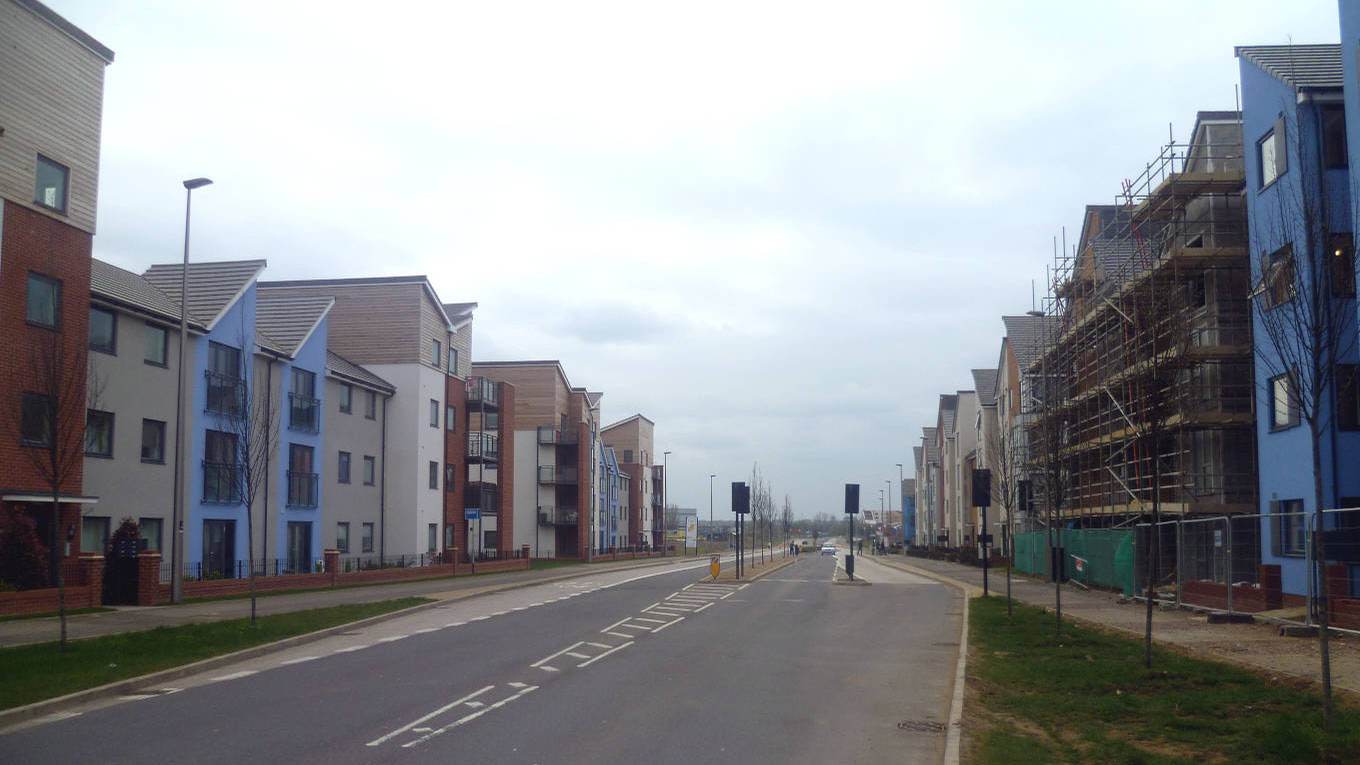-

Milton Keynes in the UK is an excellent example of a tech-enabled smart city, which is now leveraging technologies such as Artificial Intelligence and 5G for autonomous transport; Pix: Wikimedia Commons

To have a sustainable future, we should not only focus on doing less harm to the planet but also focus on doing what we can to make the world a better place. Our lives changed dramatically during the pandemic, demonstrating an enormous capacity to adapt to new situations and change the way we live. This means that change is possible! The 17 SDGs are indeed guiding lamps for us to change the world for the better. SDG-9 is key to building a sustainable world with equitable growth opportunities. Let us look at how technology can enable this. Tech-enabled resilient infrastructure: The goal here should be to develop quality, reliable, sustainable, and resilient infrastructure, to support economic development and human well-being, with a focus on affordable and equitable access for all. Smart cities powered by ultrafast, low latency 5G connectivity will power a more connected community and create opportunities. Organisations can deliver intelligent solutions using 5G, which can enable remote monitoring of energy sites, distribution of energy within a smart-grid, and automation of distribution. Innovations such as mobility-on-demand, wherein vehicles can be routed in real time to meet the demand for picking up and delivering passengers in fast-varying environments, can help in exploiting unused vehicle capacity to reduce congestion. This is possible through the creation of dynamic optimisation algorithms using real-time information and communication technologies. Milton Keynes in the UK is an excellent example of a tech-enabled smart city, which is now leveraging technologies such as Artificial Intelligence and 5G for autonomous transport. New services are being created with IoT and public data in managing microgrid services to realise climate change objectives. UK Innovate projects are providing a proving ground for start-ups in the smart city ecosystem. The ride through digital highways: 2020 was a boon for businesses that had embraced digital and a wake-up call for businesses that had not done so. Now is the time to integrate sustainability with digital, which can take us closer to a green digital economy. With digitalisation as its backbone, many innovative business models are emerging. For instance, platforms enabled by blockchain can enable paperless transactions, to buy and sell properties. Platforms based on Artificial Intelligence can provide live, global, interconnected data to organisations to make informed decisions to meet their sustainability goals. Data sharing and digital economy, with real-time analytics and optimisation, can eliminate the mismatch in supply and demand, resulting in efficient use of resources, for instance, elimination of waste in perishable supply chains. In the IT sector, we are witnessing a transition from buying and operating IT infrastructure to consuming IT infrastructure and capabilities as a service with edge-to-cloud platform-as-a-service model. According to the OECD, the green economy proportion of global market capitalisation is growing, while the fossil fuel sector is shrinking. As described by the OECD and others, the key trends that characterise innovation in the digital age are – data, which is a key input for innovation, increased focus on the development of services enabled by digital technologies, virtual simulation, 3D printing, and other digital technologies providing opportunities for more experimentation, and collaboration-driven innovation.
-
Platforms based on Artificial Intelligence can provide live, global, interconnected data to organisations to make informed decisions to meet their sustainability goals
Importance of R&D: Globally, investment in R&D as a proportion of GDP increased from 1.5 per cent in 2000 to 1.7 per cent in 2015 and remained almost unchanged in 2017, but was only less than 1 per cent in developing regions. As per the World Bank, the top five countries that spend the most on R&D as a percentage of their GDP are Israel, South Korea, Switzerland, Sweden, and Japan. International Energy Agency figures indicate that technologies and best practices could save between 18 and 26 per cent of current primary energy use in global industry.
There is a need for a collaborative approach to research and innovation, which cuts across geographies. The World Economic Forum’s Global Lighthouse community is an interesting initiative in this regard. It is a community of world-leading manufacturing facilities and value chains using Fourth Industrial Revolution (4IR) technologies to increase efficiency and productivity, in tandem with environmental stewardship. For instance, a consumer healthcare company coupled advanced controls with green technology to deploy a sensor-fed automated system to cut energy consumption, resulting in 25 per cent less energy consumed and an 18 per cent reduction in CO2.
India is a nation with a large young population – one that can be channelled towards R&D from the grassroots level. India can become a game-changer in innovation with its ‘More for Less’ innovation model that leverages its strength in indigenous research and extraordinary talent ecosystem to ensure successful outcomes with minimum investments.
Biogas
BioEnergy will showcase its innovative biogas technology in India
Mobility
Ather aims to produce 20,000 units every month, soon
Green Hydrogen
German Development Agency, GIZ is working on a roadmap for a green hydrogen cluster in Kochi
Renewable Energy
AGEL set to play a big role in India’s carbon neutrality target



















